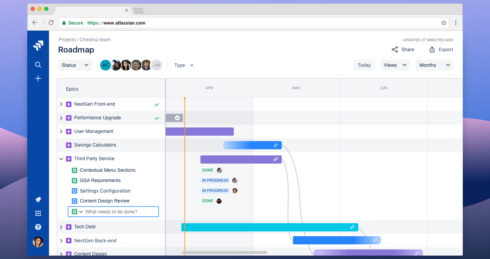
Atlassian is making another major update to its issue and project tracking software Jira, tackling what it says is one of the most popular user features: the native roadmap. According to the company, when it launched the next-generation Jira Software experience last year, 45% of users were using the roadmap feature within a month of its launch — making it the most rapidly adopted feature in the solution’s history.
“While Jira Software has been enabling teams to collaborate better together since its inception, users have increasingly been looking for more ways to roll up all the work their teams are doing into a bigger-picture view. And the roadmap allows for exactly that: every team member has access to a high-level snapshot of what they’re working on. Roadmaps also allow teams to share their plans and progress with other stakeholders, including executives, cross-functional partners, and anyone else who might not be in the weeds of a particular project day in and day out,” Matt Ryall, head of product at Jira Software for Atlassian, wrote in a blog post.
RELATED CONTENT: Atlassian eyes future of development
Some of the new features to the roadmap include a progress bar, dependency mapping, Confluence integration, hierarchy levels, and filters
The progress bar gives a macro-level overview of each roadmap item. The drop-and-drop dependency mapping feature enables users to visualize relationships between roadmap items. The new Confluence integration enables users to get an organization-level view of what teams are working on. With the solution’s new hierarchy levels users can dig deeper into item details and see all the stories and tasks associated with it. Lastly, the filters enables users to get a precise view of the roadmap and see only what is necessary to them.
In addition, the company added usability enhancements for creating smaller pieces of work and new roadmaps more easily.
Going forward, the company plans to focus more on helping teams plan, track, release and report work as well as aggregate multiple roadmaps into a single view.
“As for the next-generation experience, users will enjoy more and more of the powerful functionality they’re accustomed to seeing in Jira Software, to help teams scale workflows and collaboration across an entire organization. And as with everything in next-gen, the look and feel of these features will be fresh, with an emphasis on simplicity and ease of use,” Ryall wrote.






